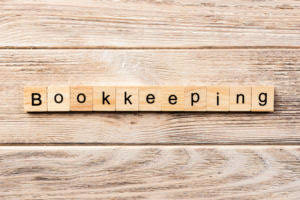
Now that you know the assets that can be appreciated and how to calculate them, let’s focus on the ones you can’t claim depreciation for. Net Book Value is the original cost of the asset less the accumulated depreciation. The primary tax consideration for these assets comes into play when they are sold or otherwise disposed of, at which time capital gains tax may be incurred. Additionally, companies should consult with a tax expert when making decisions about depreciation, as choosing the wrong method can lead to penalties from the IRS. For more detailed information on asset depreciation, you can visit the IRS website for guidance.

Five Appreciating Assets That You Should Know About For Profitable Investment
Non-compliance can lead to regulatory repercussions and misrepresentation of a company’s financial health. Intangible assets typically have a longer life span and can be more challenging to assess in terms of value. Their valuation often depends on market conditions and the competitive landscape.

Which Assets Can Depreciate?
Understanding asset management strategies and their impact on business decisions can significantly influence a company’s financial health and planning. Recognizing which assets cannot be depreciated is crucial when managing long-term investments. In addition, GAAP specifies the criteria for assessing useful Bookkeeping for Chiropractors life and residual values of depreciable assets. Companies must adhere to these standards to ensure transparency and consistency in their financial statements.
- However, amortization applies to intangible assets, while depreciation applies to tangible assets.
- When a fully depreciated asset is sold, the accounting treatment is a debit to the account for cumulative depreciation and a credit to the asset account.
- Managing fixed assets for tax and accounting purposes can be a challenging task.
- Goodwill represents the value of an established brand, customer base, or reputation of a business.
The Nature of Non-Depreciable Assets
Both land and natural resources can appreciate in value, making them critical components of a balanced investment portfolio source. Some examples of depreciable assets include tangible assets, such as machinery and other equipment. Because items are regarded to be consumed within a single year and expensed within that year, they cannot be depreciated. Non-depreciable assets typically include land, certain intangible assets (like goodwill), and items that do not lose value over time because of use or obsolescence. These assets retain their original value and thus what are retained earnings do not qualify for depreciation.
- Electronics and software can depreciate because they have a finite life and are subject to wear and tear.
- If an asset is located in an environment regularly exposed to such conditions, it may not achieve its intended service life expectancy.
- The business assets that can be depreciated come from property, including computers, furniture, vehicles, machinery, or entire buildings.
- Your car’s value depreciates the moment you drive it off the lot, and it continues to depreciate over time.
- This method works well for assets expected to have high usage in their early years and then significantly decrease over time.
- Rather than depreciation, they are accounted for utilizing the depletion methods that apportion the extraction cost over the estimated reserves.
Assets held loses value over a period due to wear and tear, obsolescence, degradation, or needing to be scrapped and replaced by the end of their useful life. Depreciation is adjusted over the years to offset this loss over a useful life. This means that the value of the building will not decrease over time like other types of property, such as vehicles depreciable assets or machinery.

